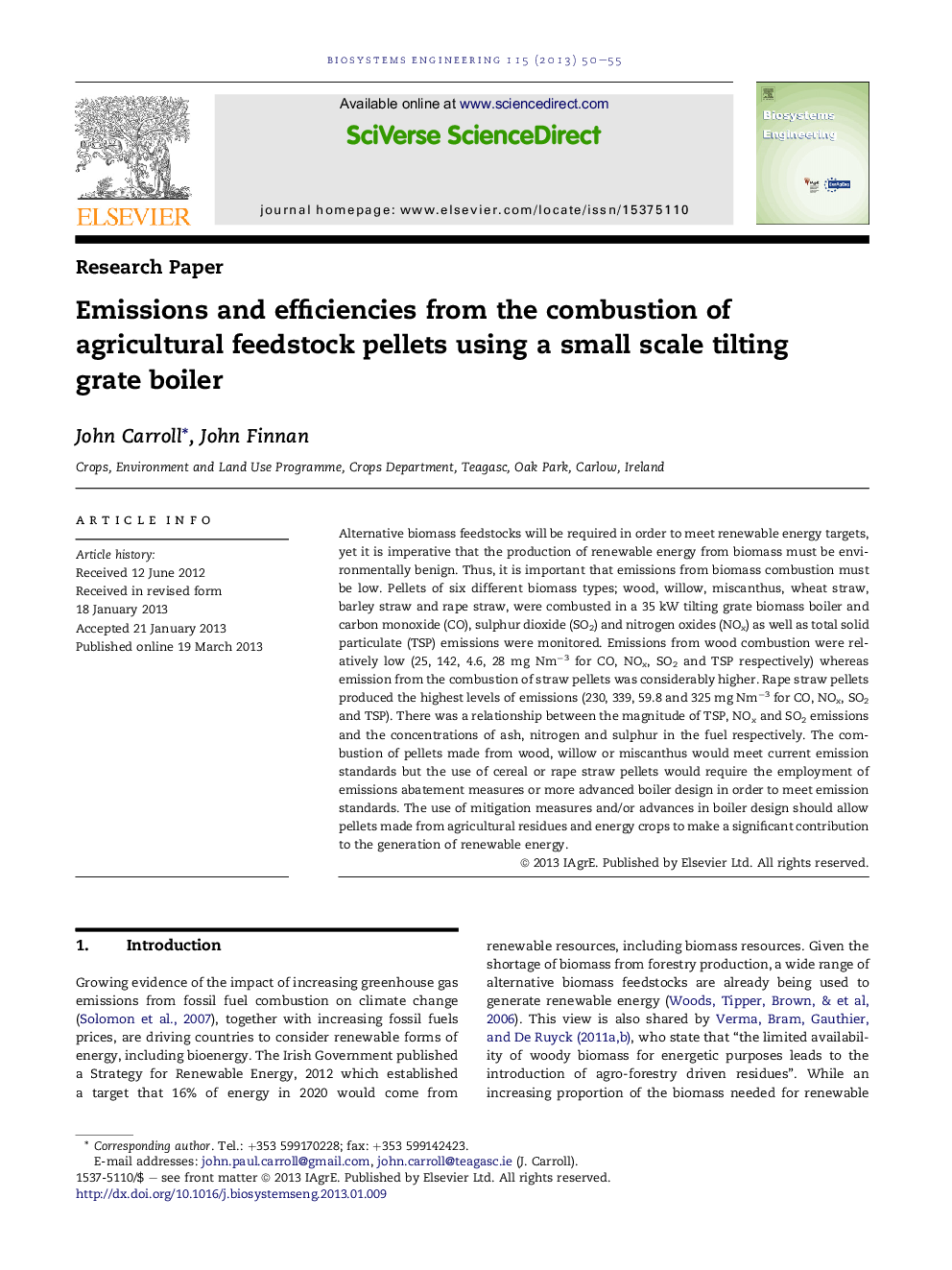| Article ID | Journal | Published Year | Pages | File Type |
|---|---|---|---|---|
| 1711440 | Biosystems Engineering | 2013 | 6 Pages |
Alternative biomass feedstocks will be required in order to meet renewable energy targets, yet it is imperative that the production of renewable energy from biomass must be environmentally benign. Thus, it is important that emissions from biomass combustion must be low. Pellets of six different biomass types; wood, willow, miscanthus, wheat straw, barley straw and rape straw, were combusted in a 35 kW tilting grate biomass boiler and carbon monoxide (CO), sulphur dioxide (SO2) and nitrogen oxides (NOx) as well as total solid particulate (TSP) emissions were monitored. Emissions from wood combustion were relatively low (25, 142, 4.6, 28 mg Nm−3 for CO, NOx, SO2 and TSP respectively) whereas emission from the combustion of straw pellets was considerably higher. Rape straw pellets produced the highest levels of emissions (230, 339, 59.8 and 325 mg Nm−3 for CO, NOx, SO2 and TSP). There was a relationship between the magnitude of TSP, NOx and SO2 emissions and the concentrations of ash, nitrogen and sulphur in the fuel respectively. The combustion of pellets made from wood, willow or miscanthus would meet current emission standards but the use of cereal or rape straw pellets would require the employment of emissions abatement measures or more advanced boiler design in order to meet emission standards. The use of mitigation measures and/or advances in boiler design should allow pellets made from agricultural residues and energy crops to make a significant contribution to the generation of renewable energy.
► Emissions from wood pellets low compared to emissions from straw pellets. ► Emissions from energy crop pellets similar to wood, wheat, barley and rape straws. ► Levels of TSP, NOx and SO2 related to concentrations of ash, N and S in the fuel. ► Abatement measures should permit the use of straw and energy crops pellets.
